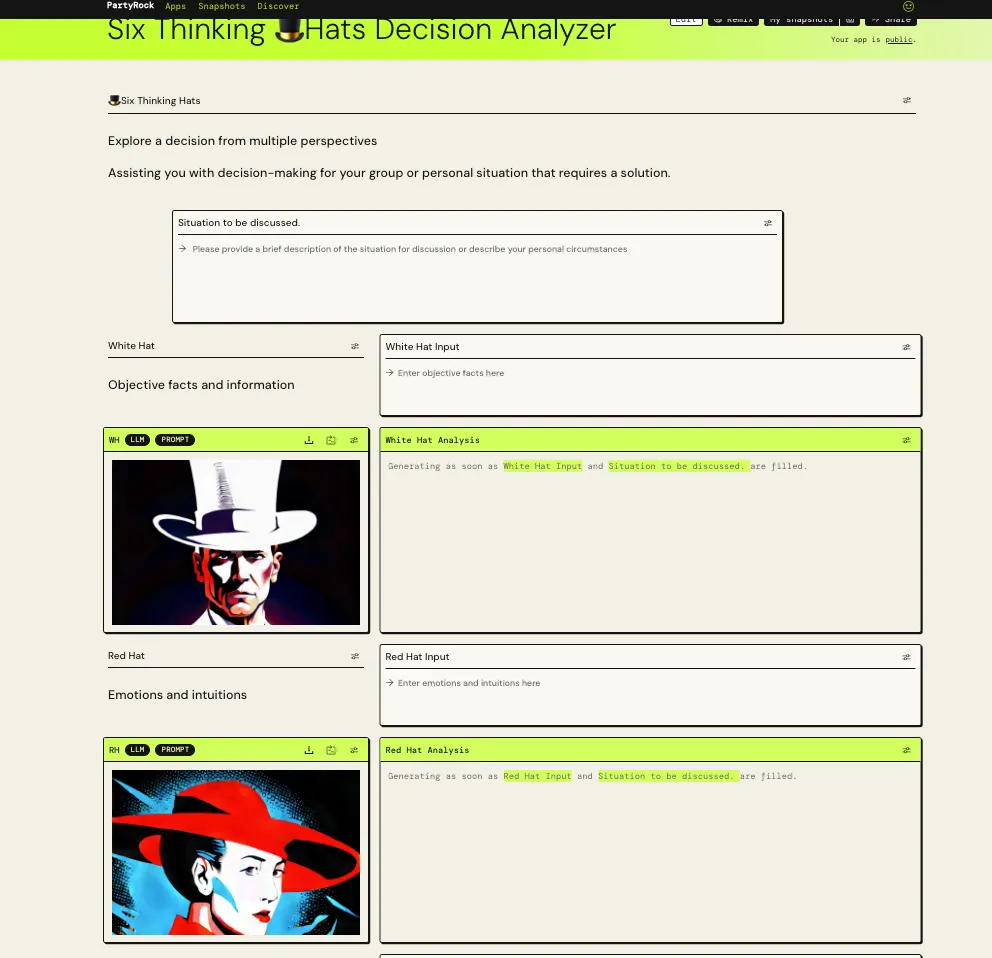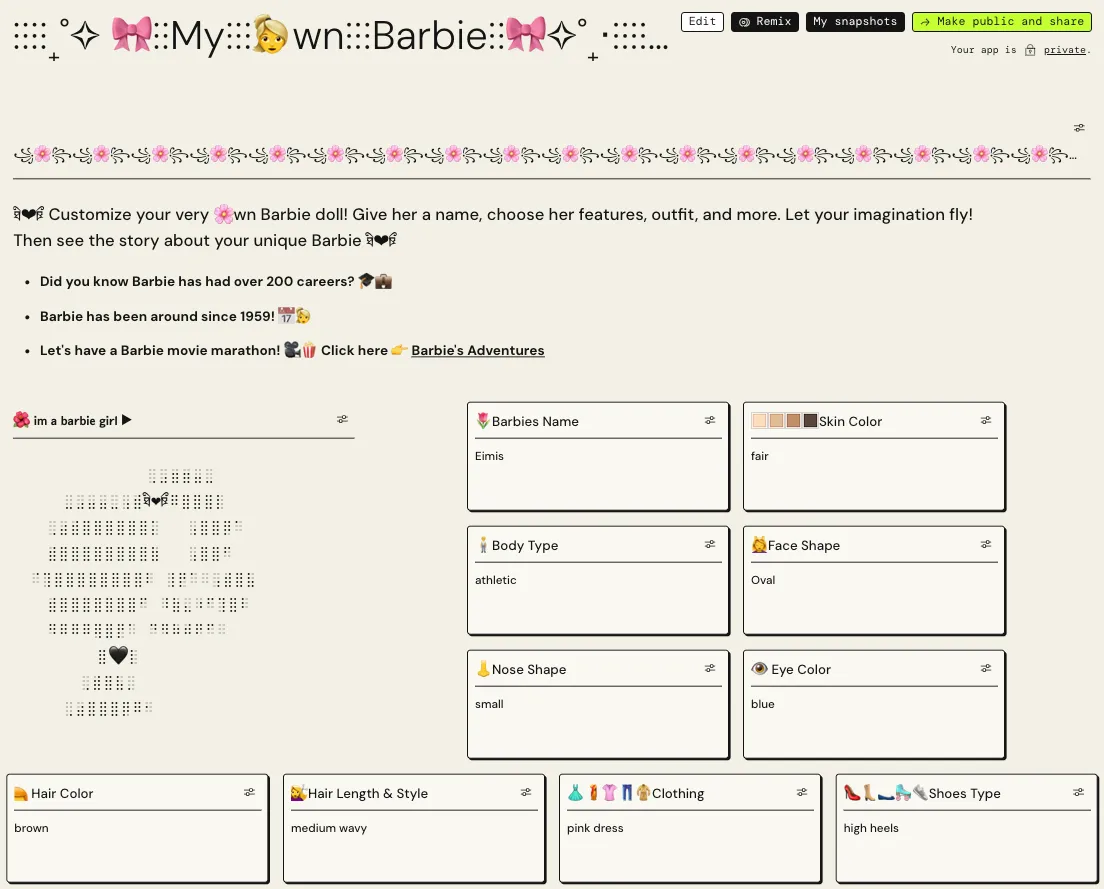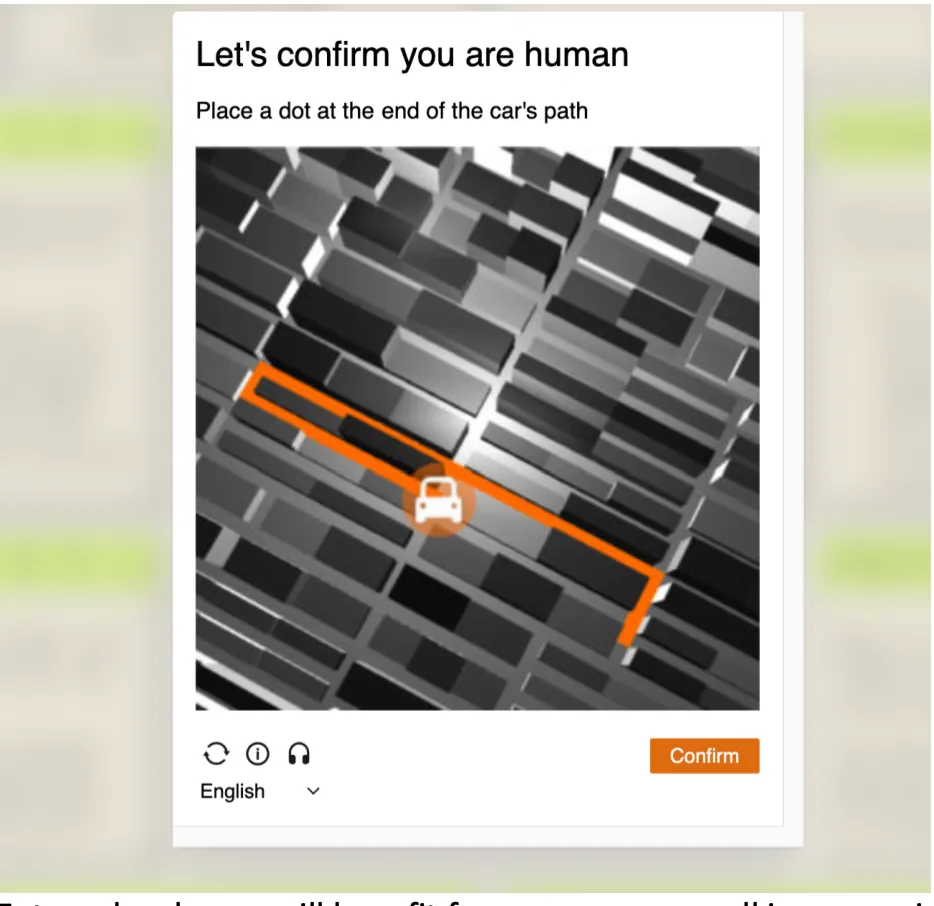From logic-driven tech to the free-spirited realms of art, from the grind of work to the thrill of play, PartyRock is your one-stop cosmos for every need, every mood, every ambition
Multiple needs, diverse emotions, various use cases, and a range of user targets. From tech to art, from work to play, all in a single place—PartyRock.
Published Mar 12, 2024
Last Modified Mar 17, 2024
Starting from the very beginning feels right to me. I am a Latina woman who pursued her studies in Venezuela. My fascination with computer science ignited when I realized that with software engineering, creation is limitless. To me, it's where technology dances with art—not just memorizing algorithms and syntax, but also weaving creativity into their application, determining their purpose and goal. This revelation drove me to become a software engineer.
It wasn't easy, especially as I completed most of my degree without a computer, earning the nickname "Lab Rat" for spending more time in the university labs than at home. Despite financial hardships and juggling work with studies, I earned my diploma. But graduating didn't solve everything; Venezuela's crisis kept me living like a perpetual student, struggling and sharing spaces with strangers.
Escaping to Costa Rica didn't bring the warm welcome I'd hoped for. Even there, hardships followed—from societal attitudes to rigid laws. I landed a one-year contract as a senior data engineer, but with no renewal in sight and returning to Venezuela not an option, I began to search for new opportunities amidst a sea of rejections. The reason was never my skill but my need for sponsorship, and only a few American companies in Costa Rica offered that.
Then came the hurdle of language. My English was inadequate, so learning it became a mission for survival. It was tough, especially not being immersed in an English-speaking environment and starting this journey at nearly 30. But perseverance paid off—I seized my first chance to work in English, and from there.
In Costa Rica, I lost the happiness. I felt a pull towards the United States, believing it held the opportunities I sought. So, I embarked on the immigration process, and after finally receiving my green card, I faced a stark reality: a job market reeling from extensive layoffs and hiring managers who saw my employment gap as a personal failing, not the result of mandatory immigration policies.
Some judged my accent or occasional mispronunciations, assuming these slip-ups reflected a lack of intelligence or professionalism—misconceptions I never encountered while working for US employers in Costa Rica, (I guess they were more forgiving there, knowing they were hiring someone locally.). They didn’t see my unique journey or past achievements.
Everything. Let me explain. Despite the harsh reality, I’m still that girl who loves to build, who dreams freely and travels to fantasy lands for inspiration. I still daydream like a child. I created 17 apps with Party Rock, and my aspirations outgrew its simple interface.
My personality, dreams, needs, and passions are infused into my apps. They each carry a distinct touch of my personal brand. Although I may risk being wrong, I believe that once you encounter any of my creations, you'll effortlessly recognize the others as extensions of my vision.
Challenges vary from person to person; what's difficult for me may not be for others. In this hackathon, as you're aware, prompt engineering is crucial, and it's all in English. Of my 17 apps, some required more intricate prompt engineering, particularly the app PartyRock | PartyRock | 🎭Phrase Origins: Guess the Source & Year❗ 「By Eimis Pacheco」 which presented a significant challenge in this area. I am proud of the final outcome.

Although PartyRock offers automatic prompt generation, in several instances, these were not sufficient for my needs, so I had to create them myself. PartyRock can generate prompts for straightforward scenarios but falls short with more complex ones.
In general, I care about more than just functionality; it's important, sure, but the look and feel of an app matter too. The simple design of PartyRock makes it tough to add my own flair, but I figured out how to infuse my apps with life and emotion. I've got a neat trick for showing an image right at the start, even before any action is taken. It's all about using PartyRock's widget dependency system. I really need static images. Take a look at this app for your reference PartyRock | Six Thinking 🎩Hats Decision Analyzer



Enhanced markdown capabilities could help a little with this, for inserting images and changing font colors would greatly improve content presentation. I can do this in markdown since I have used this before, I tried to do the same here without success. Let's look at this another example with the My Own Barbie app. I mean, this is a Barbie game, it is supposed to be very pink, this is a game for kids, it must be appealing for them.


You might not realize how much I immersed myself in PartyRock, like a child lost in play. So much that the computer frequently interrupted with little challenges, just to confirm if I was human.


For my deep dives into PartyRock, experimenting beyond the norm, and striving to think outside the box, I faced issues when publishing my apps. Although the initial error messages were vague, my troubleshooting expertise from the world of development helped me figure things out.
The last message picked my curiosity "Unfortunately an image could not be generated because of content filtering. I wondered what was being filtered; it wasn't including some of the emoji artwork, so I removed them, even though they were quite cute. I mean, I even created an app specifically for little girls and kids, imagine an app for kids without delightful, cute decorations; it would be like a playground devoid of color.


I did not see any support for integrating with external APIs which restrict the ability to enhance apps with external data sources and functionalities.
Just as these apps would have been transformative for me in the past, they have the potential to impact others similarly.
My apps will make life easier and save people money. They're for learning with fun or just enjoying yourself with cool, different entertainment. If you like to play with words and enjoy writing, you're going to love what I've made. If you're a hardcore movie and song enthusiast like me, my apps are a must-visit. I had a great time making them, and I'm sure you'll have just as much fun exploring and learning more with them.
Future developers will benefit from my apps as well in a very simple way. When I was an engineering student, uncertain of which programming language best suited my professional aspirations and whether my pseudocode was performing well, I would have cherished tools like the ones I've now developed.
As an immigrant starting from scratch with little money, I would have appreciated having the tools I've created here, which save not only money but also time. I needed access to doctors and lawyers, services I couldn't afford on a third-world country salary. Those hard times inspired me to create Medical advisor and legal assistant app.
I've also always been passionate about movies and songs; I use songs to resonate with every aspect of my life. I cannot move forward without considering which song best reflects my current situation or how my life could be depicted in a movie. So my movies and songs finder apps were a lot of fun for me.
In my current job search, I feel annoyed when job applications demand a custom cover letter and then fail to respond, indicating that I've wasted my time instead of investing that energy in something more productive, such as learning and practicing. Reason why I created Cover letter Assistant app.
During my immigration journey here in the USA, I navigated through difficult situations and decision-making entirely on my own, without another person to help me think with greater clarity. So, my app, Six Thinking Hats, would be a blessing for those who are alone and need some extra help before making a final decision.
Finally, I realized that I struggle to articulate my thoughts and emotions. You know, it's harder to express feelings in a second language—it's easier in your own. Then, I thought I could borrow someone else's words. I am not the only one who has felt this way; others have experienced the same emotions and have written about them. Their words can become my words, as they echo my feelings. That is how my creative composition app was born.
It proved that no matter where you come from or what language you speak, you can make something great that helps people.
Let's say PartyRock wasn't available and I had to pivot to Amazon Bedrock for app development. Here’s what it would look like:
- Flexibility: I believe that with Bedrock I would have had the flexibility I was looking for, due to its easy integration with other Amazon services and other tools like Amazon SageMaker for custom machine learning solutions, Amazon Rekognition for image recognition, Amazon Polly for text-to-speech conversion, Amazon Comprehend for sentiment analysis.
For instance, I aimed to visualize what an Amazon architecture might look like, and I wanted to automatically generate some mental maps. However, since the image models are focused on artistic images, achieving this was impossible. JavaScript could have been the solution, but PartyRock doesn't offer the integration capability to do that.
- Learning Curve: As a more advanced, flexible, and customizable tool, there would naturally be a steeper learning curve. You know, everything has its trade-offs. The more control you gain, the greater the responsibility and the more there is to learn. Like Uncle Ben Said "With great power comes great responsibility" 😂
- Selection of the model that best suits my needs: Since Bedrock deals with foundation models, we'd have to choose the right one for our app. Bedrock offers a variety of foundation models, and I would pick the one I consider the best fit for the kind of app I am developing. If it's something that requires understanding natural language, a model trained in language processing would be key.
- Task execution and orchestration: As a data engineer, you can imagine how important task orchestration is to me, and I can accomplish this by using what is called agents. I can quickly create an agent, which allows orchestrating and executing tasks based on logical sequences and reasoning abilities. Bedrock has a trace function that lets you follow the agent's thoughts one step at a time. This makes it easier to find and fix issues, and to keep making the application better.
- Development Process: The development would involve using the Amazon Bedrock API to interact with the chosen foundation models. I would also leverage AWS's developer tools for version control and continuous integration.
- Integration of Additional Tools or Services: Amazon Bedrock is designed to work seamlessly with other AWS services, I would get a whole ecosystem, so I would likely integrate additional AWS services, which would give me the possibility to scale my apps. I could integrate additional tools such as Amazon S3 for storage, Amazon Lambda for serverless computing, or Amazon RDS for database services.
- Enhanced Control Over User Security: Bedrock has something called Guardrails, which provides tools to create AI applications that adhere to responsible AI practices. It offers customizable safeguards that ensure AI safety and policy compliance across various applications, even when using different foundational models (FMs) like Anthropic Claude or Amazon Titan Text. The system can block specific topics and filter out harmful content, such as hate speech or sexual content.
In general, I truly enjoyed crafting these apps on PartyRock. Although aimed at beginners, I wish there were more options for technical customizations and for those who like to represent their personal style and vision. I wanted to develop other apps that were in my mind, but the simplicity of the environment didn't allow me to do so. For instance, I wanted to represent images about how it would look like an Amazon architecture, and automatically generate some mental maps, but since the image models are focused on artistic images this was impossible. Javascript could be the answer but there is not the possibility of doing that with PartyRock.
Write your suggestions to little.cloudicorn@gmail.com